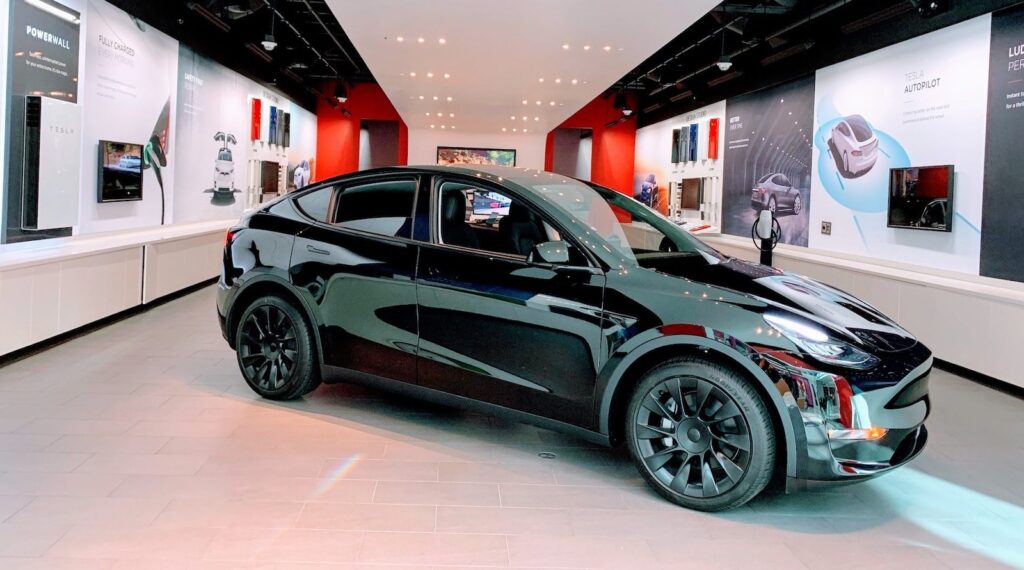Sign up for CleanTechnica’s Weekly Substack for Zach and Scott’s in-depth analyses and high level summaries, sign up for our daily newsletter, and/or follow us on Google News!

From having spent a lot of time in California, there might be a California bias in my sustainability coverage. The Golden State has the most EVs of all US states and is a leader in clean energy and energy storage. So there’s much to write about, and perhaps I have overlooked what is happening with EVs in the rest of the country, to a degree.
Recently, I received an email from the Southwest Energy Efficiency Energy Project about what might happen if the federal EV tax credits are eliminated, specifically in the Southwest. Of course, the impact would be national. However, it’s fascinating to get perspectives from all over the country, not only the high level one.
Travis Madsen, the Transportation Program Director at the Southwest Energy Efficiency Project (SWEEP), provided perspective for CleanTechnica below with many detailed answers to some questions.
About how many fully electric vehicles are there currently in the Southwest, and what is EV market share there?
There are about half a million electric vehicles currently on the road in the Southwest (defined here as Colorado, New Mexico, Arizona, Nevada, Utah, and Wyoming).
In the new light-duty vehicle market, 14% of customers in the region chose an EV in 2024, up from 3% in 2020. Colorado led the region with plug-in vehicles accounting for almost a quarter of new sales.
Sales of medium-duty electric vehicles in the region grew from almost none in 2020 to more than 7% of the market in 2024. Nevada led the region with almost 15% plug-in market share in 2024.
So far in 2025 it looks like the trend toward increasing EV deployment is continuing, although tariffs, economic uncertainty and potential policy changes could have more visible impacts by the end of the year.
Which states in the region are the EV leaders?
See Figure 2 in this blog post. In 2024, Colorado led the way in light-duty EV market share, ranking second in the nation behind California. Nevada ranked fifth nationally (excluding DC). Utah ranked 13th. Arizona ranked 15th. As a region, the Southwest is ahead of the nation in terms of EV adoption. (2024 light-duty EV market share was 10.9 percent in the Southwest, compared to 8.6 percent nationally).
If you’re interested in medium duty EVs (e.g., Ford Transit or Amazon Rivian delivery vans), here’s market share data for that in 2024:
Only California, Washington, and Hawaii were ahead of Nevada in terms of medium-duty EV market share.
How could a typical Southwest EV driver save about $20,000 over a 200,000 mile vehicle lifetime?
Most of the savings potential is fundamental to the technology. Electric vehicles are far more efficient than comparable combustion vehicles. They also have lower maintenance costs. Those factors far exceed any differences between the up-front purchase price of an electric vehicle vs. a comparable combustion model. This blog post goes into more detail about how we calculated lifetime ownership costs for different vehicles in different Southwest states. Factors that went into the calculation assume typical local driving patterns, typical local costs for gasoline, optimal local residential electricity rates (so off-peak if a utility has time-of-use rates; or if there’s an EV specific rate available), and federal fuel economy data for both electric vehicles and comparable combustion models. We used these inputs in Atlas Public Policy’s DRVE tool, which enabled us to calculate a total cost of ownership for different kinds of vehicles (in net present value terms, meaning if you were to pay the full cost of the vehicle for 200,000 miles right now, what would that cost be).
Note that the calculation assumes cost-optimized fueling behavior. In other words, charging at home or at a fleet depot using the best available electricity rate (typically overnight or early in the morning). Drivers that often use public DC fast charging stations will pay more for fuel and see less savings.
Savings are larger in places that typically have higher gasoline costs and cheaper electricity — Nevada stands out on this score.
Savings are less where the difference between the cost of gasoline and electricity is less — Wyoming is most like this in the Southwest.
We go into fuel cost savings in more detail in this blog post.
How could consumers across the Southwest lose out on more than $13 billion in transportation savings by 2030 if the Inflation Reduction Act tax credits are repealed?
The main value of the federal electric vehicle tax credits are that they point consumers toward technologies that are more efficient and offer major cost savings. With the tax credits in place, more consumers will make the choice to purchase an electric model for their next vehicle — and they will reap the rewards of that decision over the lifetime of that vehicle in the form of cheaper fuel and reduced maintenance costs.
If Congress repeals the tax credits, a significant number of buyers will likely buy a combustion vehicle instead of an EV, thinking more about the sticker price of the car than what it costs to own and operate it over decades.
In our blog post, we calculated how much savings drivers in the Southwest might miss out on if the tax credits were repealed. The methodology section of the blog explains our calculations in more detail, but put simply, we took an estimate of how repealing federal EV tax credits would slow the growth of the electric vehicle market, estimated how many Southwest consumers would buy combustion vehicles instead of EVs in that circumstance, and then estimated how much money they’d end up wasting because those vehicles are less efficient and more costly to maintain.
What would the impact of repealing the EV tax credits be on economic activity and jobs in Nevada and Arizona?
Responding to increasing consumer demand for efficient and cost-effective electric vehicles, companies are investing across the country in building new mines and factories to assemble batteries, vehicle components and actual vehicles. The way the Inflation Reduction Act works (by focusing purchase credits on vehicles built in the United States) is magnifying that activity. Northern Nevada in particular is home to companies involved in every aspect of electric vehicle production, from mining lithium, to designing and manufacturing cutting-edge batteries, to making electric vehicle components, to assembling actual vehicles (like the Tesla Semi truck). Arizona is also a leading location for companies siting new factories, with one of the largest new battery factories in the United States going into Queen Creek.
If Congress repealed federal EV tax credits, it would pull the rug out from the industry in these states. People would lose jobs — both existing and future jobs. The ICCT report cited in the blog post quantifies anticipated job losses. Although not quantified, there would surely be indirect economic impacts that would ripple outward from canceled factory investments and absent salaries.
Atlas Public Policy released a report on Monday that also estimates the importance of the EV tax credit to jobs and investment in the U.S. that might be worth a look.
Is your organization doing anything to keep the federal EV tax credits intact, and, if so, what?
SWEEP is a 501(c)(3) non-profit organization. We’re primarily working to educate the public about the value of the federal EV tax credit and why it exists. We hope that the information we provide will help consumers understand that there’s real value in energy efficient transportation, and help stakeholders and decision-makers understand what’s at stake with any potential decision to modify or repeal the credits.
What can members of the public do to help keep them available?
Members of Congress in both the House and the Senate are putting together a bill that will shape the federal budget for the next decade — including the future of federal EV tax credits. Members of the public should reach out to their Senators and Representatives to express their opinions. People can find contact information for their Congressional representatives here.
Whether you have solar power or not, please complete our latest solar power survey.
Have a tip for CleanTechnica? Want to advertise? Want to suggest a guest for our CleanTech Talk podcast? Contact us here.
Sign up for our daily newsletter for 15 new cleantech stories a day. Or sign up for our weekly one on top stories of the week if daily is too frequent.
CleanTechnica uses affiliate links. See our policy here.
CleanTechnica’s Comment Policy




